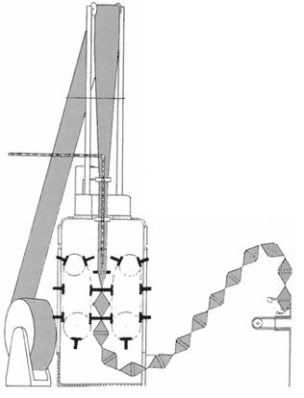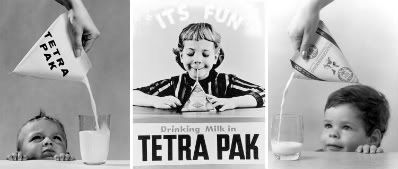You might think tissues aren't all that important. They're just tissues. But according to the European Tissue Symposium:
One of the most important factors for the development of our modern society is hygiene. Good health and high and improving quality of life is directly related to good hygiene.And also:
One of the most important products for good hygiene is tissue paper, developed for all kinds of wiping and cleaning.So therefore, I think it's safe to say that tissue is one of the most important things in the modern world.
But what is tissue? This is tissue. And here's a picture to represent tissue:

If you're interested in the properties of tissues, which you're not, but I am, there's a nice little section on product properties:
The first tissue handkerchiefs were introduced in the 1920, immediately making a genuine contribution to hygiene and cleanliness. The products have been refined over the years, especially for softness and strength, but their basic design has remained constant. Today each person in Western Europe uses about 200 tissue handkerchiefs a year, with a variety of 'alternative' functions including the treatment of minor wounds, the cleaning of face and hands and the cleaning of spectacles.This study comparing the efficacy of various hand drying methods is quite fascinating (shorter summary available here). It's the sort of thing Nicholson Baker would have produced had he been scientist rather than a novelist. This is what Baker says about hand dryers in The Mezzanine:
Are people truly content to be using the hot-air blower? You hit the mushroom of metal that turns it on and, as the instructions recommend, you Rub Hands Gently under the dry blast. But to dry them even as thoroughly as a single paper towel would dry them in four seconds, you must supplicate under the droning funnel for thirty seconds, much longer than anyone has patience for; inevitably you exit flicking water from your fingers, while the blower continues to heat the room. In case you do decide to stand for the full count, the manufacturer (World Dryer Corporation) has provided a short silk-screened text to read to pass the time. It says:Interestingly, in the two decades since Baker wrote that, the World Dryer Corporation has changed the message on their dryers, now it says:
To Serve you better --- We have installed Pollution-Free Warm Air Hand Dryers to protect you from the hazards of disease which may be transmitted by towel litter. This quick sanitary method dries hands more thoroughly prevents chapping --- and keeps washrooms free of towel waste.
In the corner of this statement, World has printed the small Greek letter that looks like a hamburger in profile, the symbol of the environmental movement. But does the environmental movement have anything to do with the reason why the Wendy's restaurant that I stood in on September 30, 1987 had installed this machine in its men's room? No. Is it, in fact, an efficient, environmentally upright user of the electricity produced by burning fossil fuels? No - there is no off button that would allow you to curtail the thirty-second dry time - you are forced to participate in waste. Does it prevent chapping? Dry air? Is it quick? It is slow. Is it more thorough? It is less thorough. Does it protect us from the hazards of disease? You will catch a cold quicker from the warm metal public dome you press to start the blower than from plucking a sterile piece of paper than no human has ever held from a towel dispenser, clasping it in your very own hands to dry them, and throwing it away. Come to your senses, World! The tone of authority and public-spiritedness that surrounds these falsehoods is outrageous! How can you let your marketing men continue to make claims that sound like the 1890s ads for patent medicines or electroactive copper wrist bracelets that are printed on the formica on the tables at Wendy's? You are selling a hot-air machine that works well and lasts for decades: a simple, possibly justifiable means for the fast-food chains to save money on paper products. Say that or say nothing.
Dryers help protect the environment. They save trees from being used for paper towels. The eliminate paper towel waste. They are sanitary and help maintain cleaner facilitiesI'm not sure if the change represents a wider social change, with environmental concerns now more common, or if people weren't really convinced by the hygeine argument.
Anyway, I think Baker is talking about the World Dryer Corporation Model A series (shown here). This model has since been been updated to the XA series, which starts automatically, thereby removing Baker's objection to touching the "warm metal public dome" to start the dryer.
Also, the performance of electric hand dryers has improved, with the introduction of "jet air dryers". In the study linked to above, jet air dryers perform equally well as paper towels in terms of drying efficiency. They are also more hygenic than standard warm air dryers, by only producing a relatively small increase in bacteria after use (although only paper tissues saw an actual decrease).
Because of the power of jet air dryers, they do however have the potential to spread contaminants further within the washroom environment, so maybe they're not as hygenic as paper towels, but then how hygenic is it if you reach to get a paper towel, brush your fingers on the underside of the dispenser and then discover that it hasn't been refilled, so you have to wipe your hands on your trousers?
And anyway, what difference does any of it really make when you're just going to have to open the door using the same handle that everyone else who didn't bother washing their hands anyway has just used?




